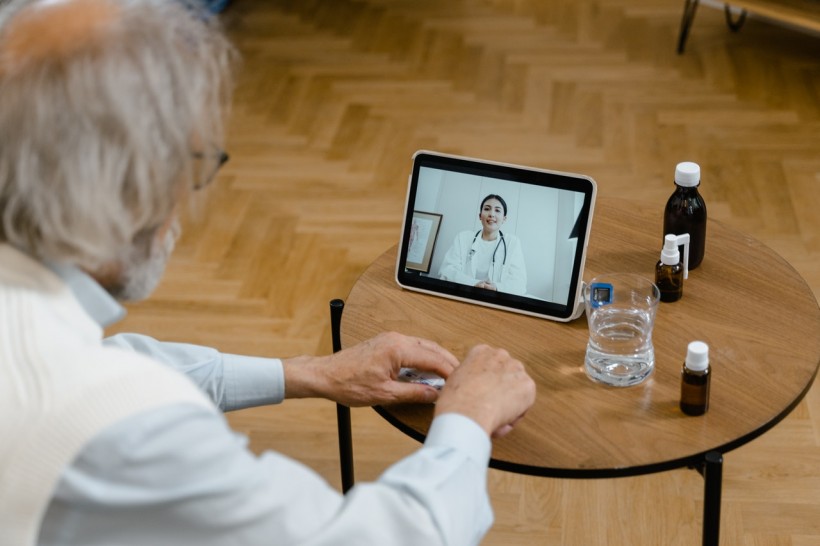There are various ways that extreme weather conditions like hurricanes Harvey and Irma or floods or dangerously low temperatures prohibit people from getting the medical treatment they need.
Getting outdoors and going to the local doctor's office or emergency facility may no longer be an option in these types of scenarios. When a natural catastrophe occurs, ambulances may have difficulty getting to patients. In a calamity, patients may not leave their homes for days or even weeks.
It's transforming the way people get medical treatment, especially in emergencies. In the event of a natural catastrophe, people may use telehealth solutions from the comfort of their own homes and get treatment. Learn more about how telehealth enhances access to treatment in the face of harsh weather conditions.
Improved quality of care
In the wake of natural catastrophes, telemedicine is becoming more crucial in healthcare delivery. It is now possible for doctors in areas where it is too risky to visit to provide essential medical services without endangering their patients. During the Ebola epidemic in West Africa, aid organizations used telemedicine to advise patients while bringing medical knowledge to war-torn Syria. In times of crisis, telehealth's capabilities are put to the test.
Convenience
Using telehealth, patients may get medical treatment without dealing with the weather or the difficulty of commuting. There is no need to leave the comfort of your own home to get health advice and counseling services, as well as to get refills for your prescriptions.
It would help if you remembered that local hospitals and clinics might become overburdened with people during and immediately after a catastrophe. The use of telehealth by physicians on the ground in these settings helps speed up the process of patient assessment, diagnosis, and communication. Patients with life-threatening diseases may be stabilized, triaged, and adequately treated with the support of remote access to subspecialists. More urgent patients may reach clinicians through their devices (smartphone or computer) rather than going to a busy hospital.
Providing essential information
Information on medical issues, such as where to locate assistance, whether or not it is safe for patients to walk outdoors, and home remedies for their symptoms, may be distilled by healthcare providers for their patients. Ambulances may be summoned in the event of a medical emergency. Care providers may assist patients in managing their symptoms while they wait for treatment if it is not an emergency.
In addition, disaster response seldom addresses long-term mental health concerns, which are critical for preventing long-term trauma.
Reducing the number of emergency room visits
In a natural catastrophe or other emergencies, telehealth may minimize the number of people who have to go to the hospital's emergency department, thereby reducing congestion, waiting times, and the risk of infection. According to recent studies, about 30 percent of all ER visits are non-urgent. Urgent care clinics and retail clinics may treat between 13.7 percent and 27.1 percent of these visits. Around $4.4 billion may be saved by redirecting these ER visits. According to a survey of 1,500 senior citizens, telemedicine may cut the number of emergency room visits by 20%.
Preventing a pandemic by tackling the epidemic
When the Ebola virus surged over areas of Africa, US-based health institutions and aid groups employed telehealth. On top of that, the laptops and tablets they delivered had clinical decision support software installed on them so that individuals on the ground could use the most up-to-date remedies.
Hospitals and health systems in the United States have established telehealth and telemedicine technologies to assist quarantined care teams and link physicians with experts for quick consultations if the Ebola or Zika viruses spread here.
In the wake of recent flu epidemics and potentially biological warfare occurrences - even suicide clusters - the same strategies are now being applied to various other health challenges. Using artificial intelligence, government agencies may now monitor social media, communications networks, and other internet sources for emerging patterns and disease outbreaks.
The adoption of this technology by health systems has allowed them to detect an impending flu epidemic and prepare for an influx of patients in the ER (or DTC telehealth service).
Personalized care
Telehealth services can be used by patients dealing with a medical emergency or a chronic condition during a natural disaster to manage their symptoms, complete routine processes such as medication refills, and consult with a healthcare professional to determine whether a trip to the ER is necessary.
Every one of these initiatives has the potential to save lives and enhance the health of patients and the community at large. In addition to the obvious advantages to patients and clinicians, telehealth may considerably reduce disaster response costs since distant physicians do not need to be transported, fed, or sheltered.
* This is a contributed article and this content does not necessarily represent the views of sciencetimes.com















